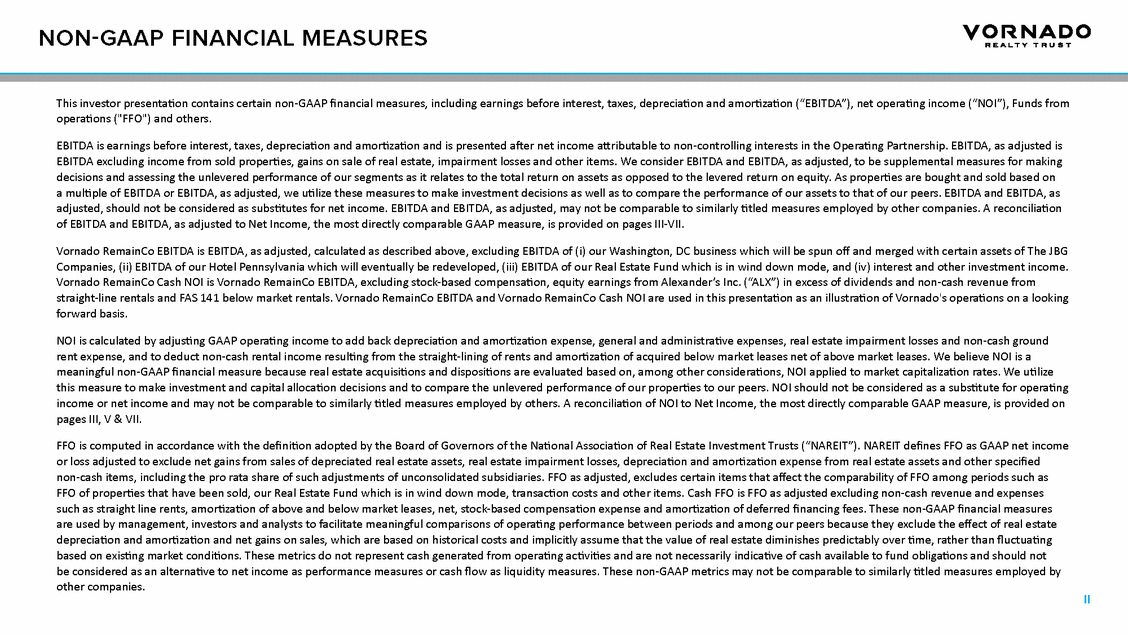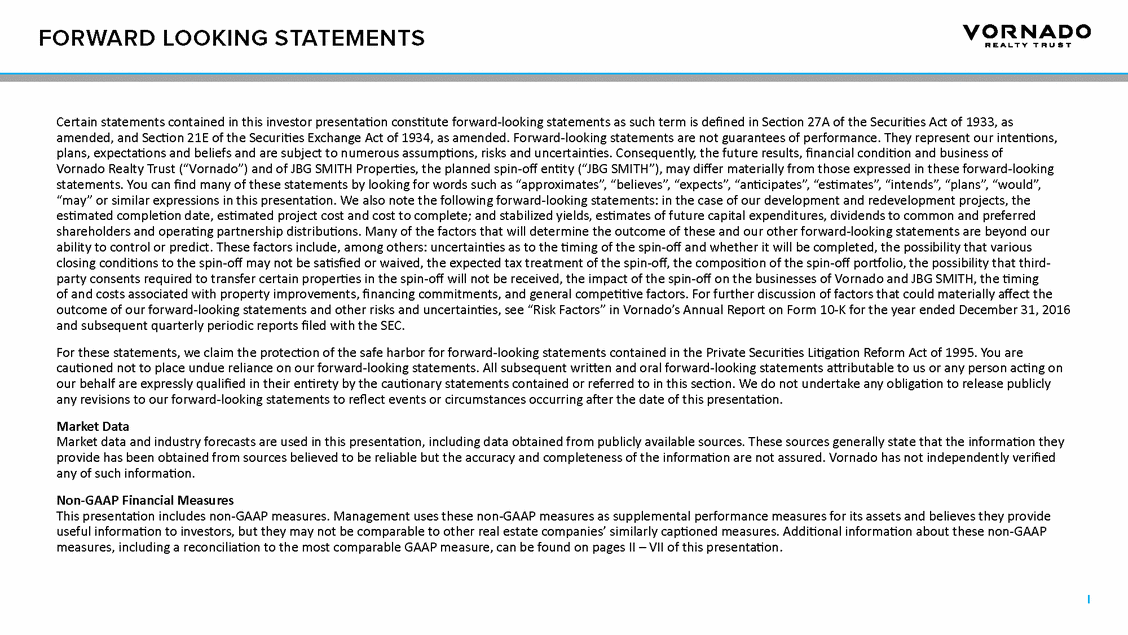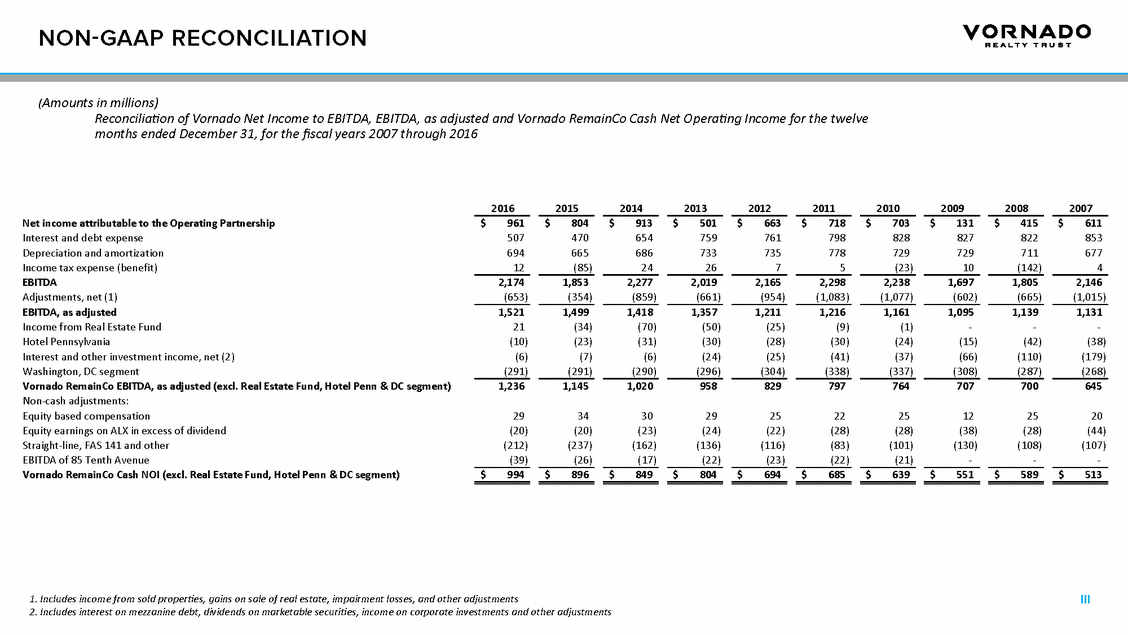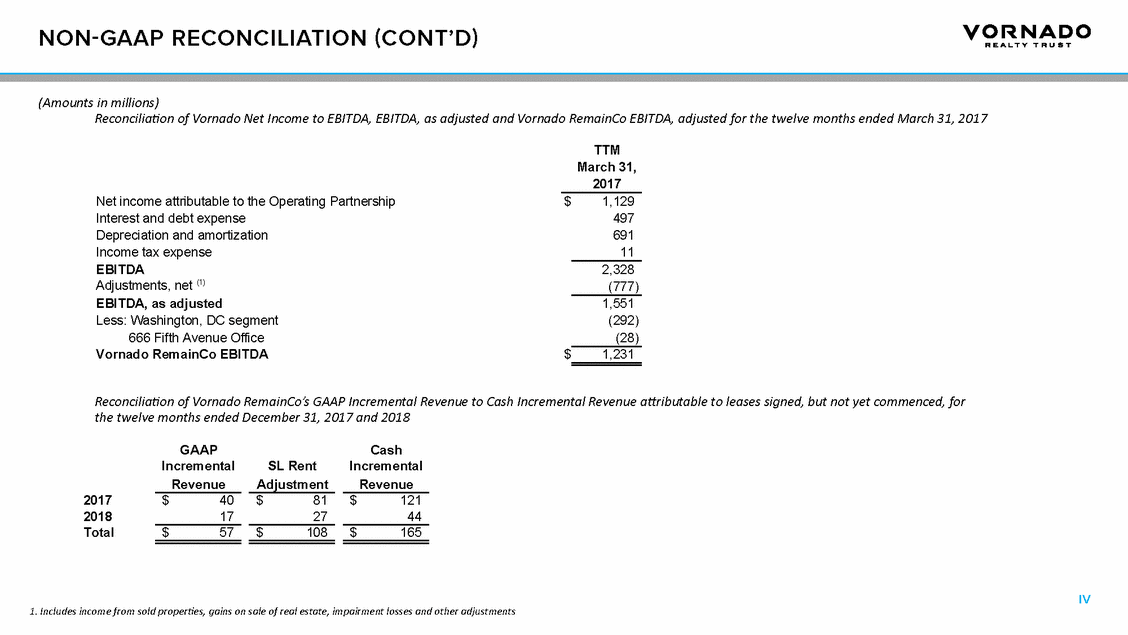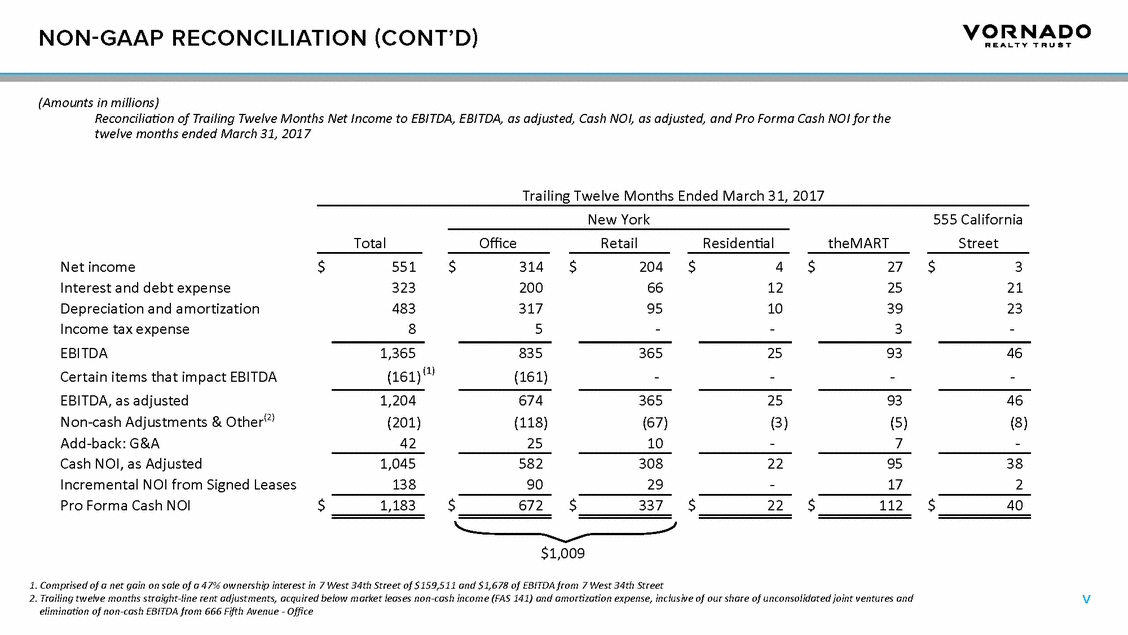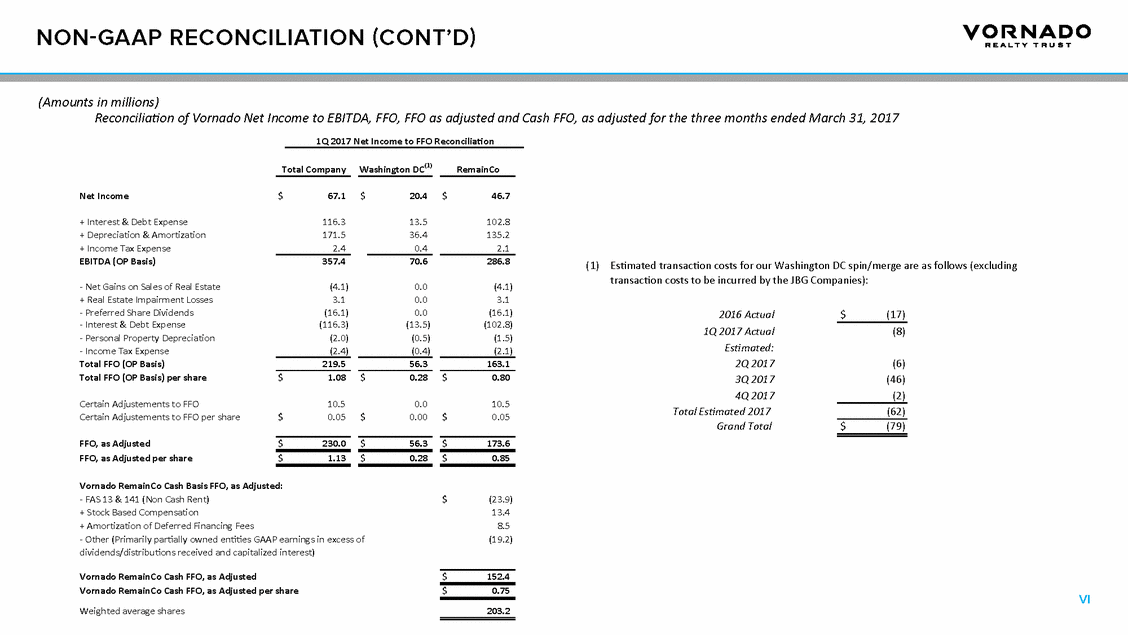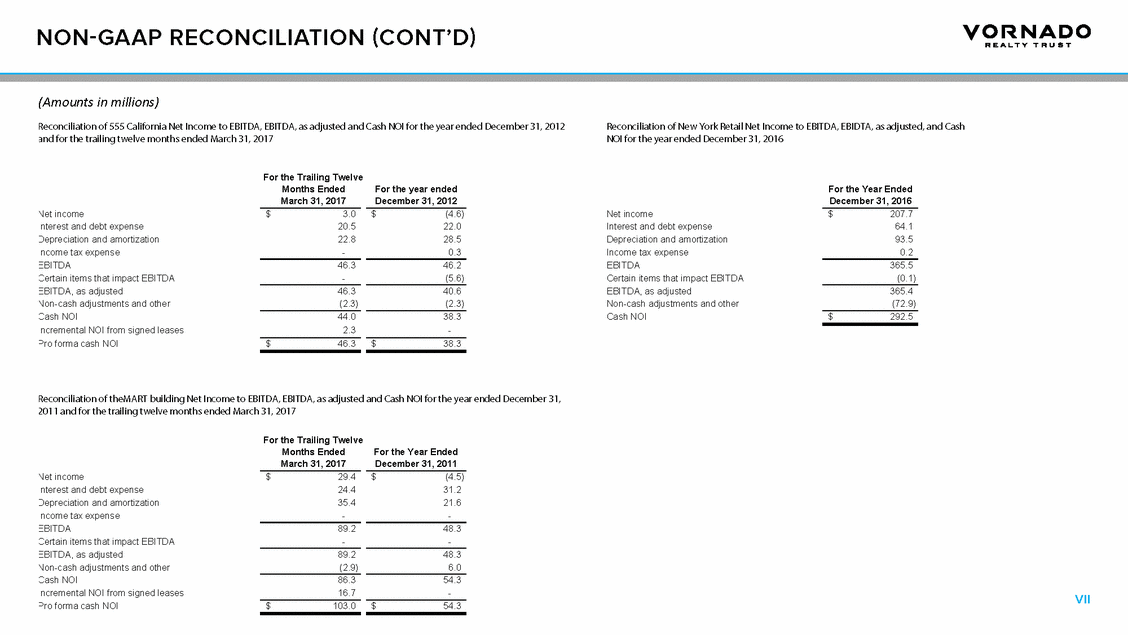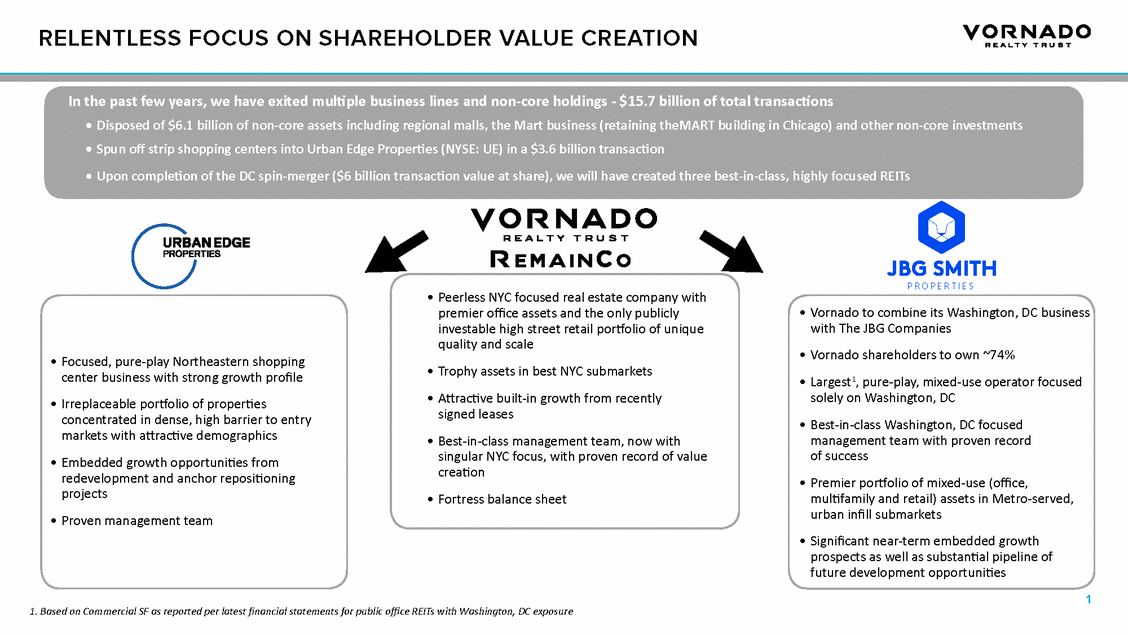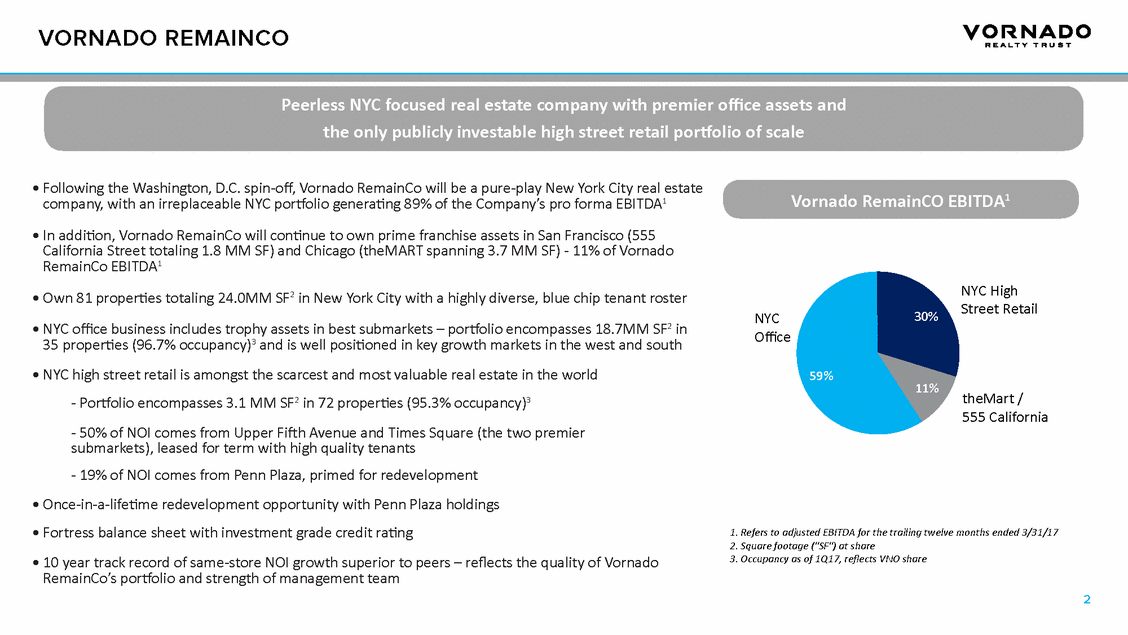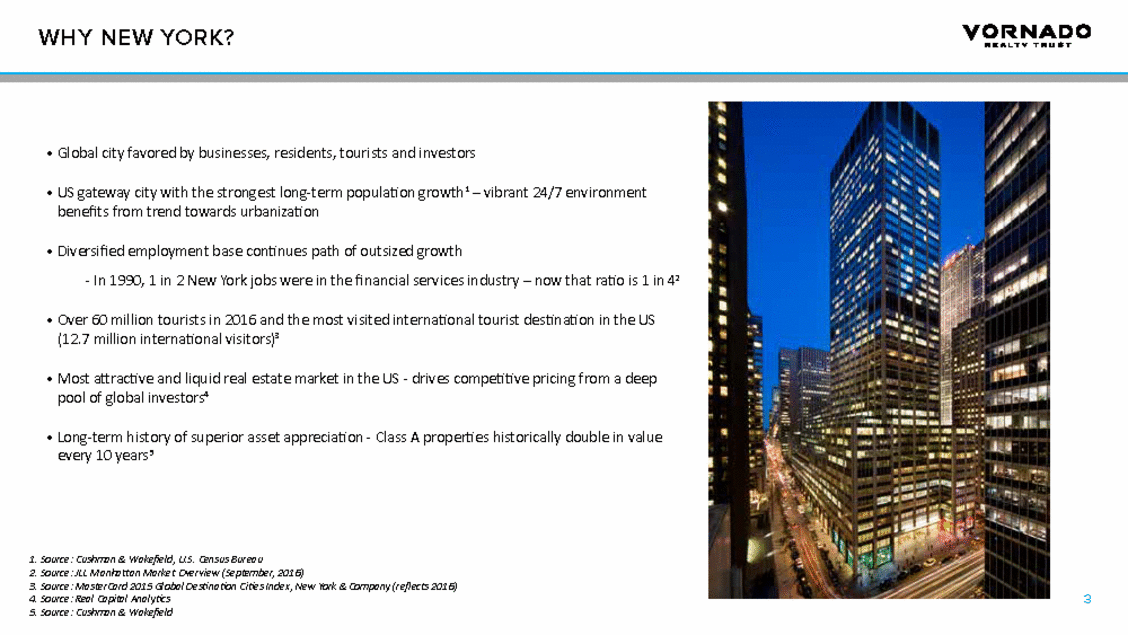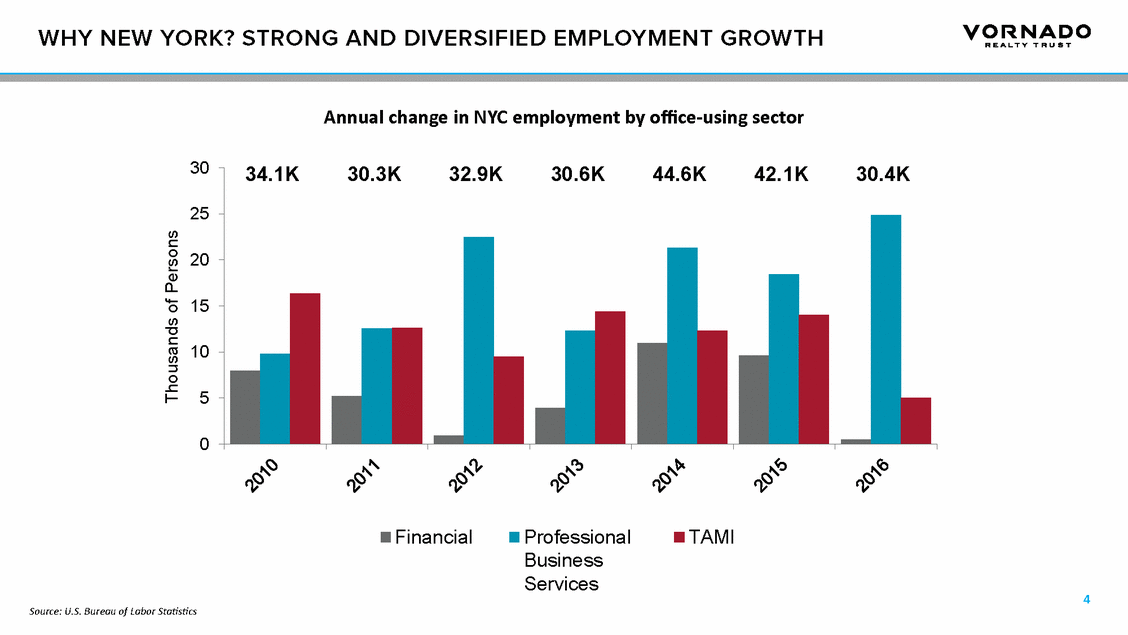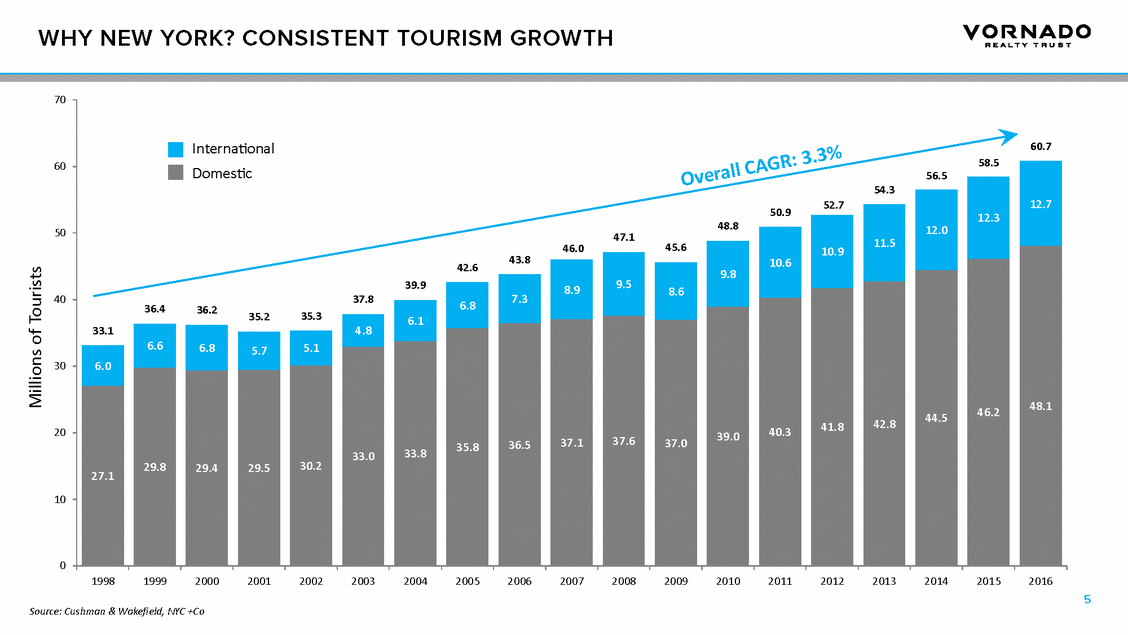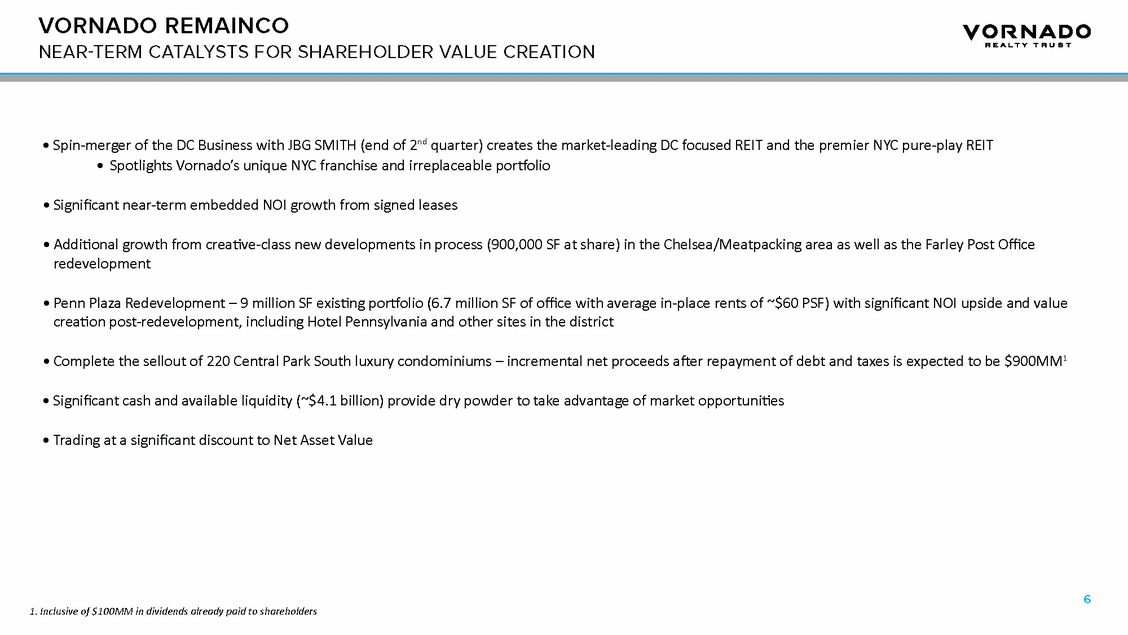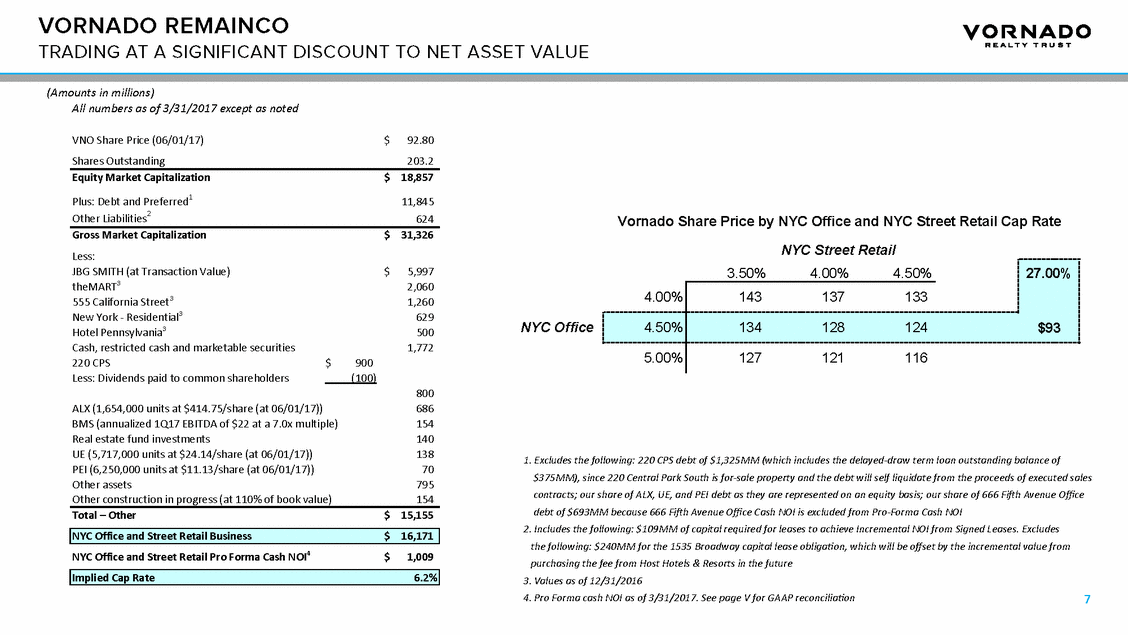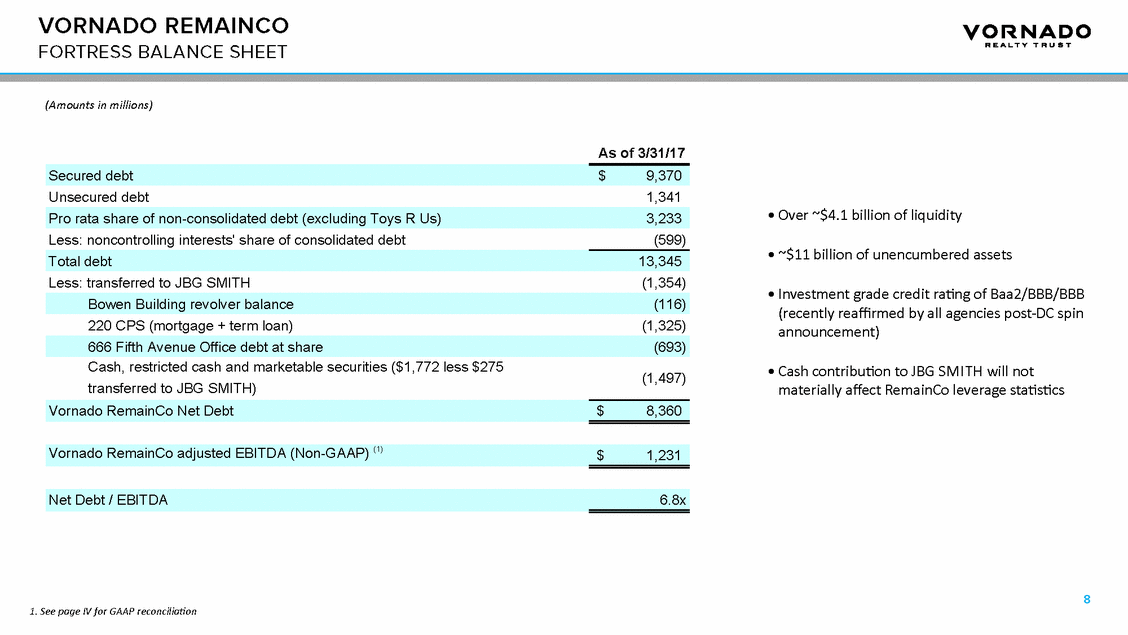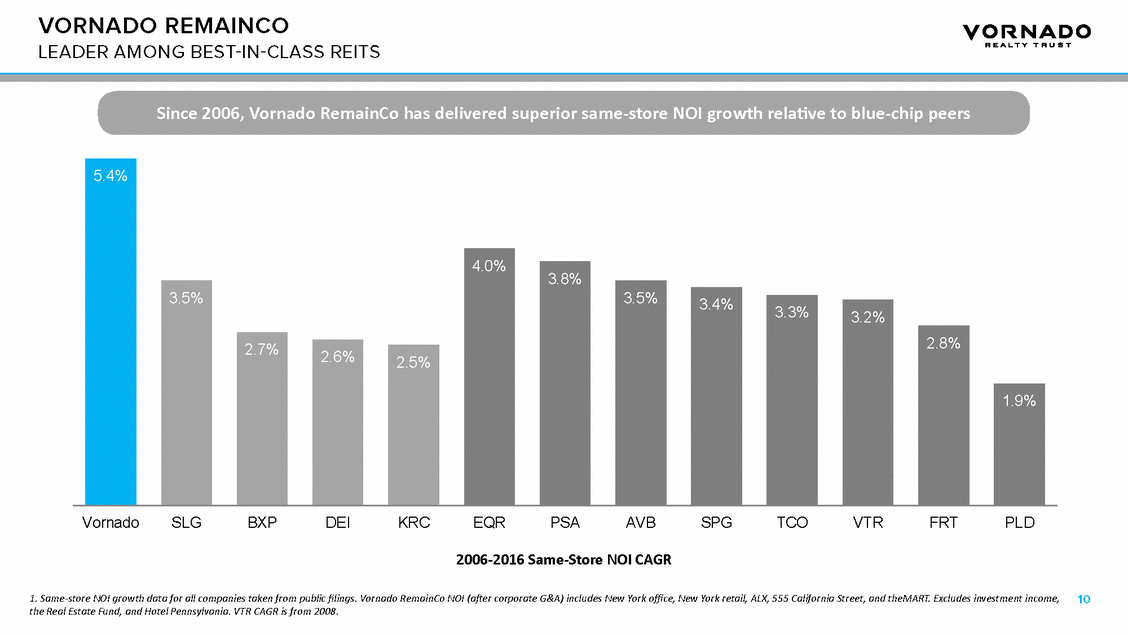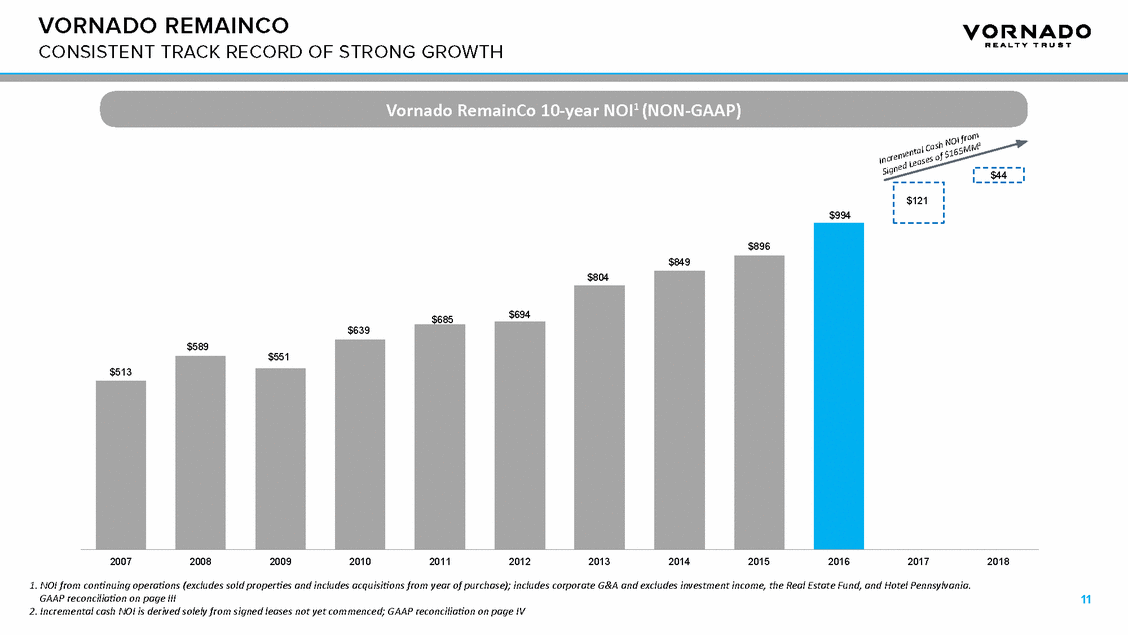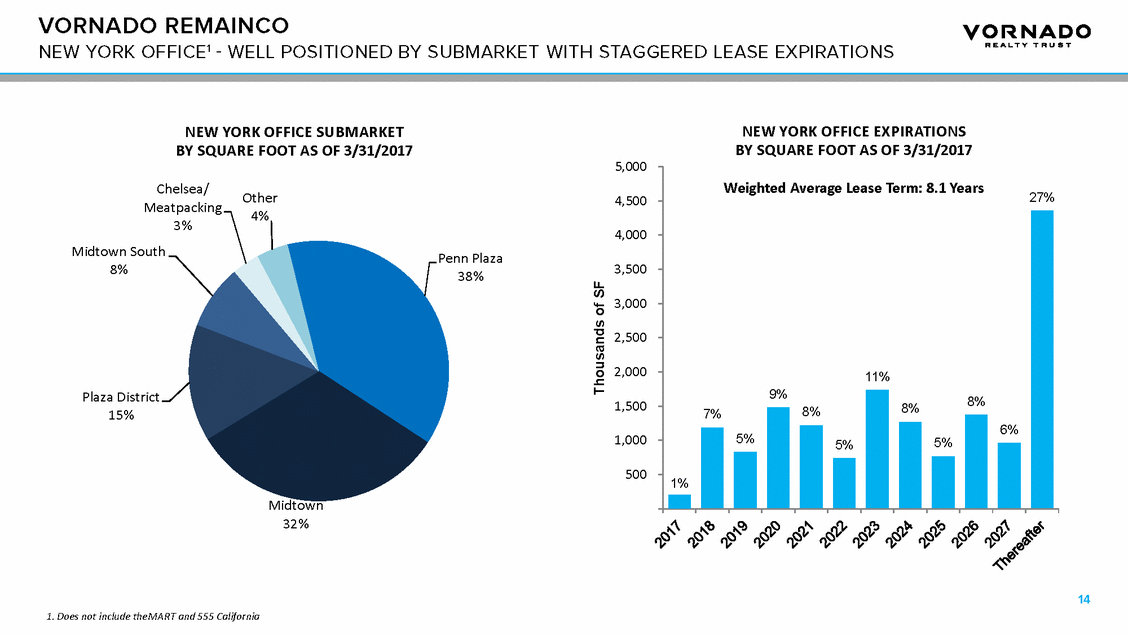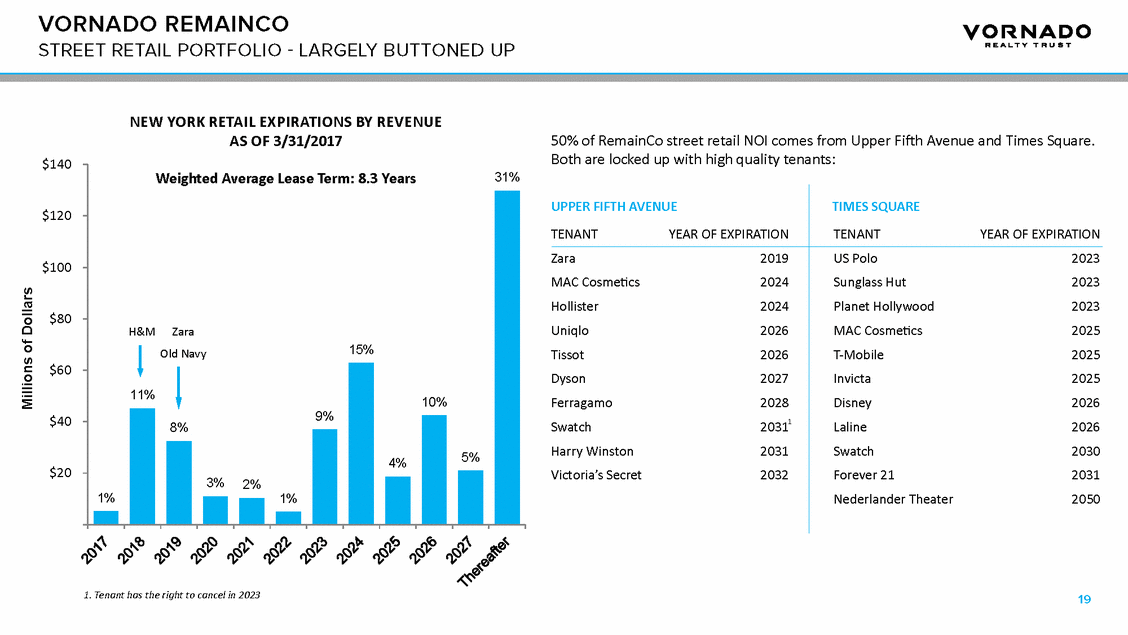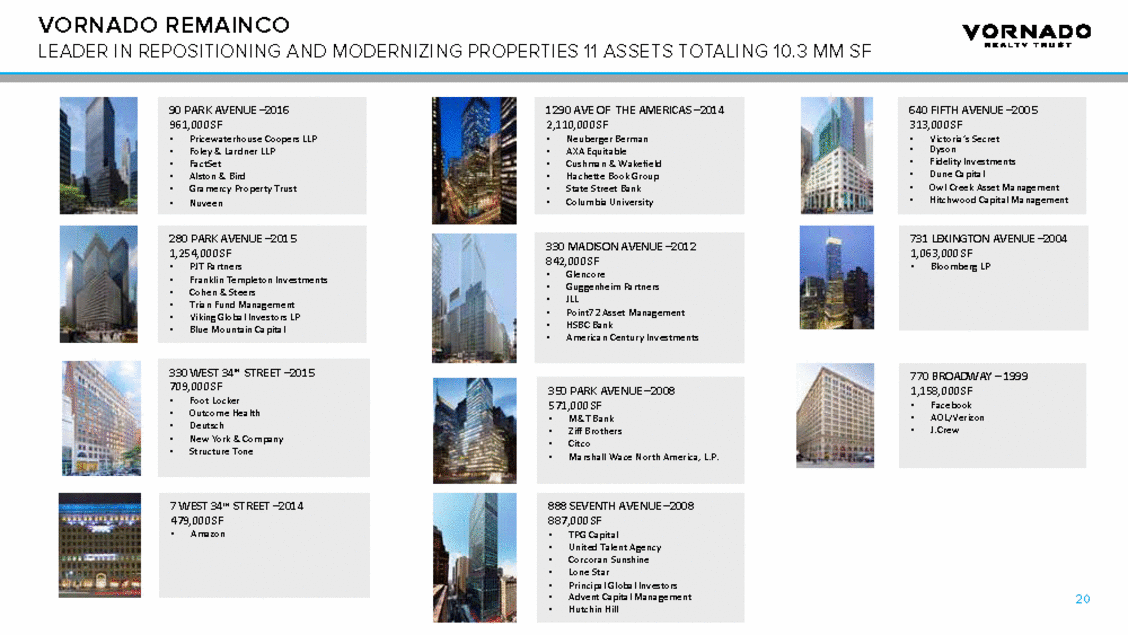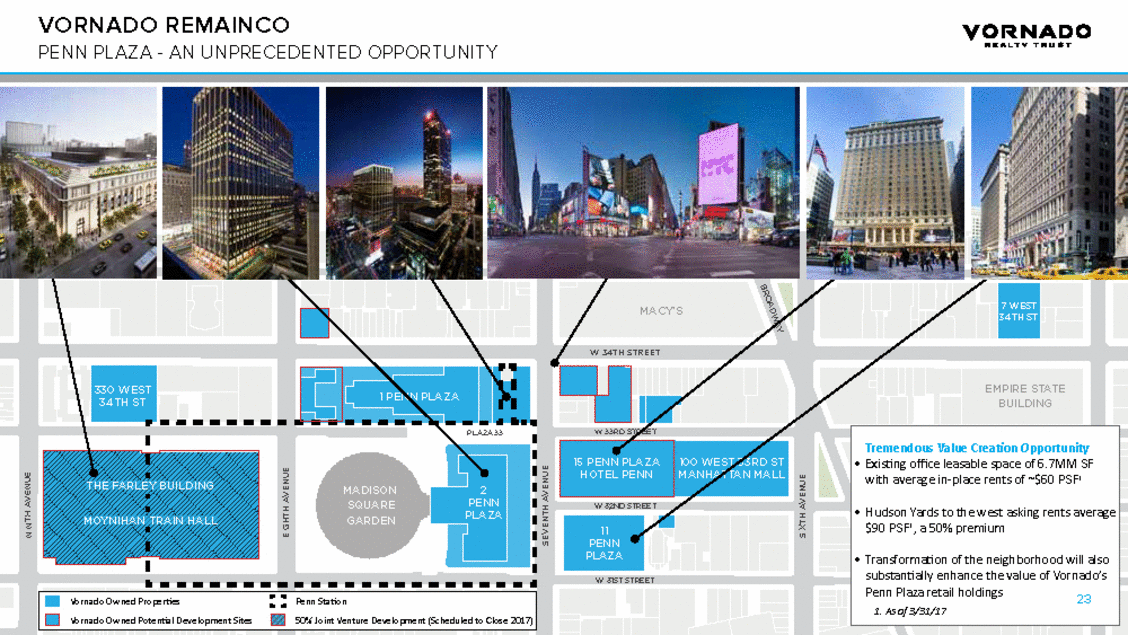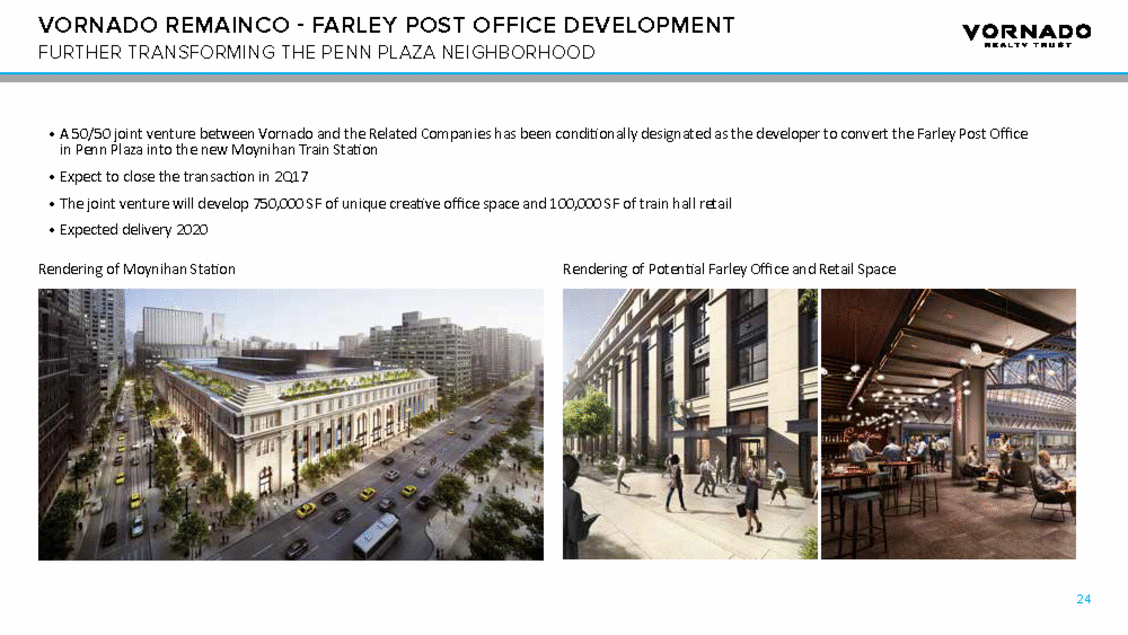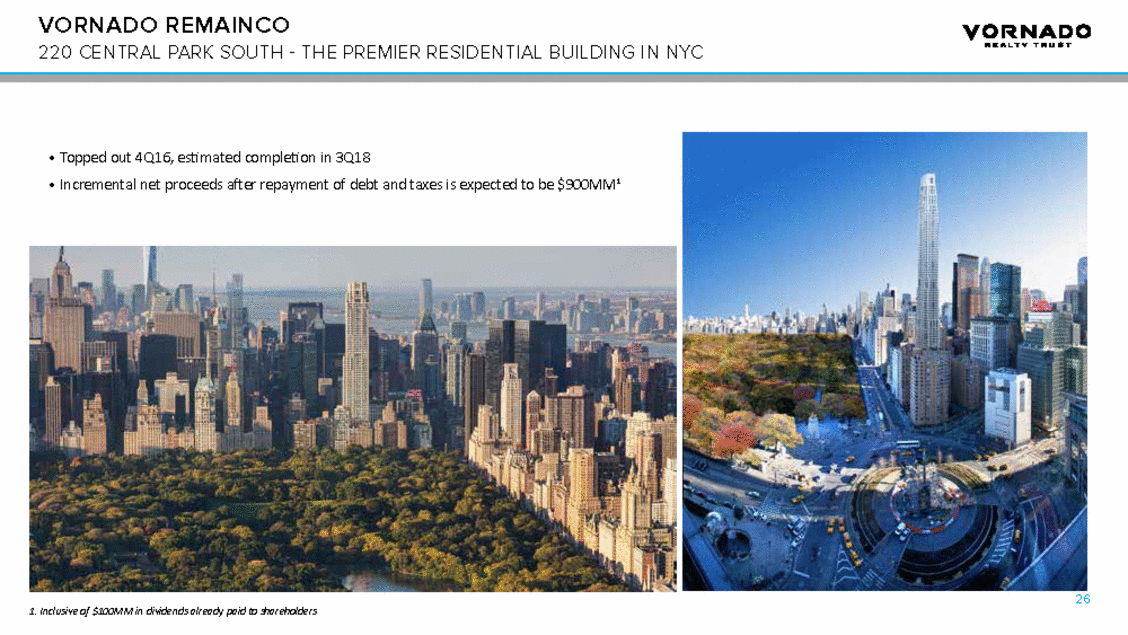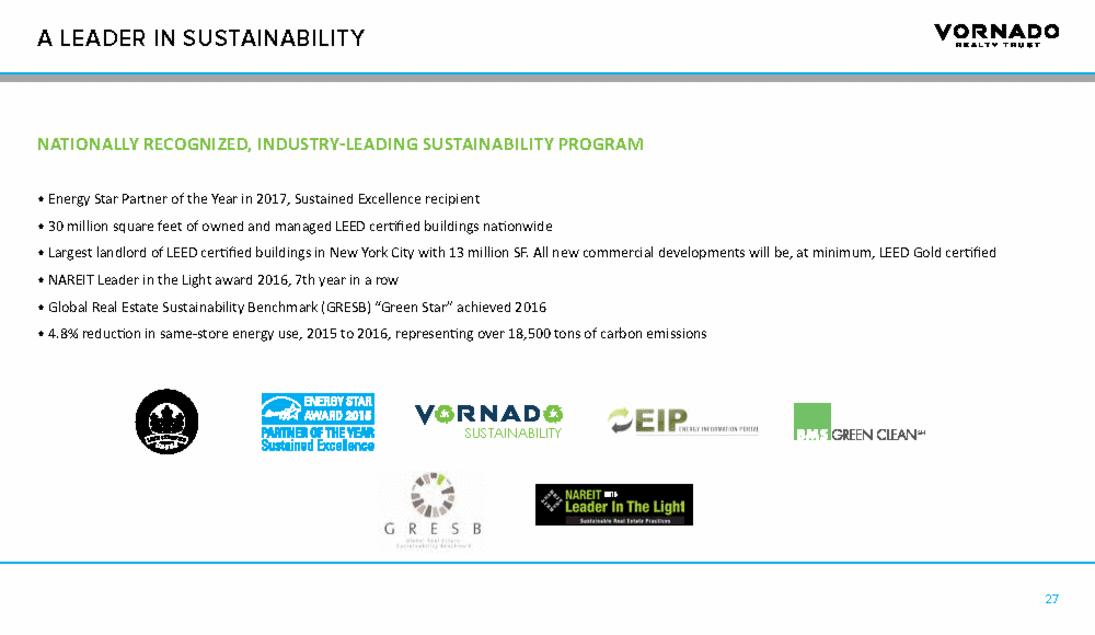NON-GAAP FINANCIAL MEASURES This investor presentation contains certain non-GAAP financial measures, including earnings before interest, taxes, depreciation and amortization (“EBITDA”), net operating income (“NOI”), Funds from operations ("FFO") and others. EBITDA is earnings before interest, taxes, depreciation and amortization and is presented after net income attributable to non-controlling interests in the Operating Partnership. EBITDA, as adjusted is EBITDA excluding income from sold properties, gains on sale of real estate, impairment losses and other items. We consider EBITDA and EBITDA, as adjusted, to be supplemental measures for making decisions and assessing the unlevered performance of our segments as it relates to the total return on assets as opposed to the levered return on equity. As properties are bought and sold based on a multiple of EBITDA or EBITDA, as adjusted, we utilize these measures to make investment decisions as well as to compare the performance of our assets to that of our peers. EBITDA and EBITDA, as adjusted, should not be considered as substitutes for net income. EBITDA and EBITDA, as adjusted, may not be comparable to similarly titled measures employed by other companies. A reconciliation of EBITDA and EBITDA, as adjusted to Net Income, the most directly comparable GAAP measure, is provided on pages III-VII. Vornado RemainCo EBITDA is EBITDA, as adjusted, calculated as described above, excluding EBITDA of (i) our Washington, DC business which will be spun off and merged with certain assets of The JBG Companies, (ii) EBITDA of our Hotel Pennsylvania which will eventually be redeveloped, (iii) EBITDA of our Real Estate Fund which is in wind down mode, and (iv) interest and other investment income. Vornado RemainCo Cash NOI is Vornado RemainCo EBITDA, excluding stock-based compensation, equity earnings from Alexander’s Inc. (“ALX”) in excess of dividends and non-cash revenue from straight-line rentals and FAS 141 below market rentals. Vornado RemainCo EBITDA and Vornado RemainCo Cash NOI are used in this presentation as an illustration of Vornado's operations on a looking forward basis. NOI is calculated by adjusting GAAP operating income to add back depreciation and amortization expense, general and administrative expenses, real estate impairment losses and non-cash ground rent expense, and to deduct non-cash rental income resulting from the straight-lining of rents and amortization of acquired below market leases net of above market leases. We believe NOI is a meaningful non-GAAP financial measure because real estate acquisitions and dispositions are evaluated based on, among other considerations, NOI applied to market capitalization rates. We utilize this measure to make investment and capital allocation decisions and to compare the unlevered performance of our properties to our peers. NOI should not be considered as a substitute for operating income or net income and may not be comparable to similarly titled measures employed by others. A reconciliation of NOI to Net Income, the most directly comparable GAAP measure, is provided on pages III, V & VII. FFO is computed in accordance with the definition adopted by the Board of Governors of the National Association of Real Estate Investment Trusts (“NAREIT”). NAREIT defines FFO as GAAP net income or loss adjusted to exclude net gains from sales of depreciated real estate assets, real estate impairment losses, depreciation and amortization expense from real estate assets and other specified non-cash items, including the pro rata share of such adjustments of unconsolidated subsidiaries. FFO as adjusted, excludes certain items that affect the comparability of FFO among periods such as FFO of properties that have been sold, our Real Estate Fund which is in wind down mode, transaction costs and other items. Cash FFO is FFO as adjusted excluding non-cash revenue and expenses such as straight line rents, amortization of above and below market leases, net, stock-based compensation expense and amortization of deferred financing fees. These non-GAAP financial measures are used by management, investors and analysts to facilitate meaningful comparisons of operating performance between periods and among our peers because they exclude the effect of real estate depreciation and amortization and net gains on sales, which are based on historical costs and implicitly assume that the value of real estate diminishes predictably over time, rather than fluctuating based on existing market conditions. These metrics do not represent cash generated from operating activities and are not necessarily indicative of cash available to fund obligations and should not be considered as an alternative to net income as performance measures or cash flow as liquidity measures. These non-GAAP metrics may not be comparable to similarly titled measures employed by other companies. II
